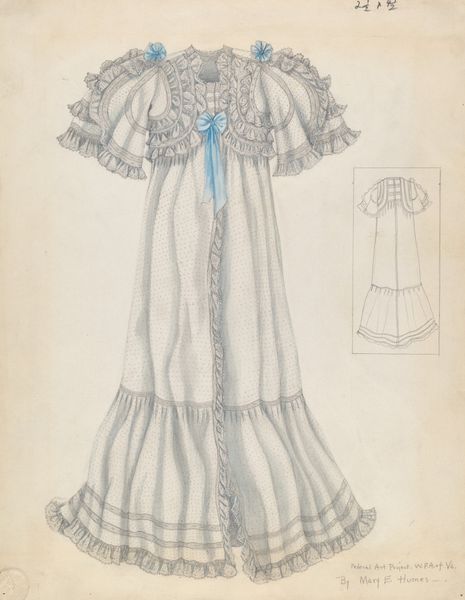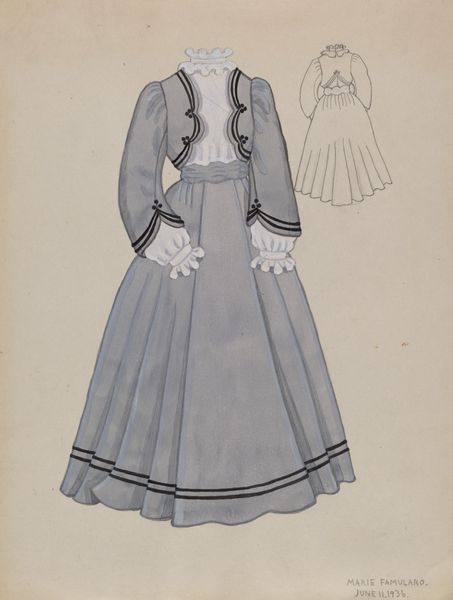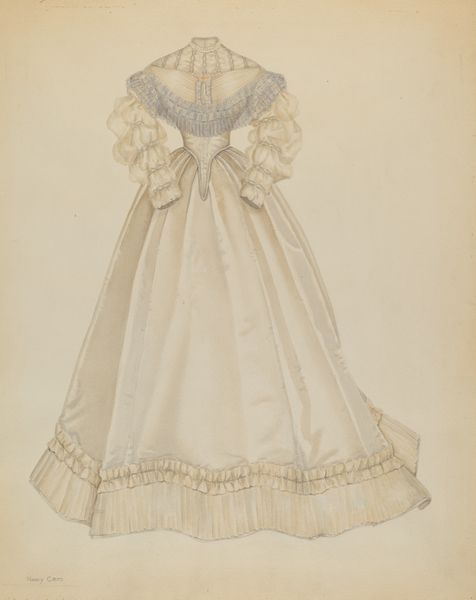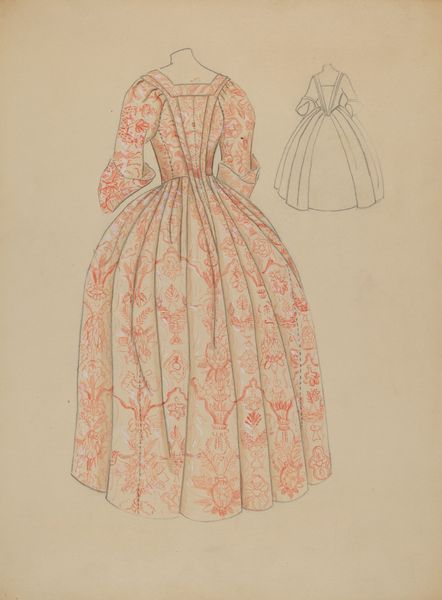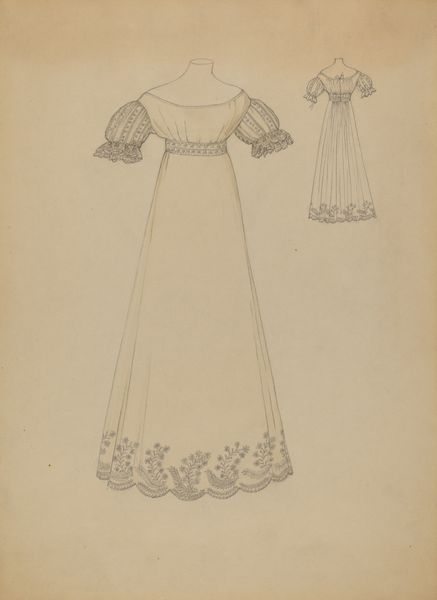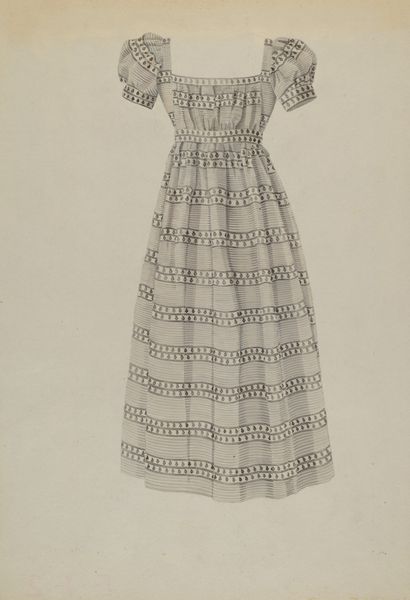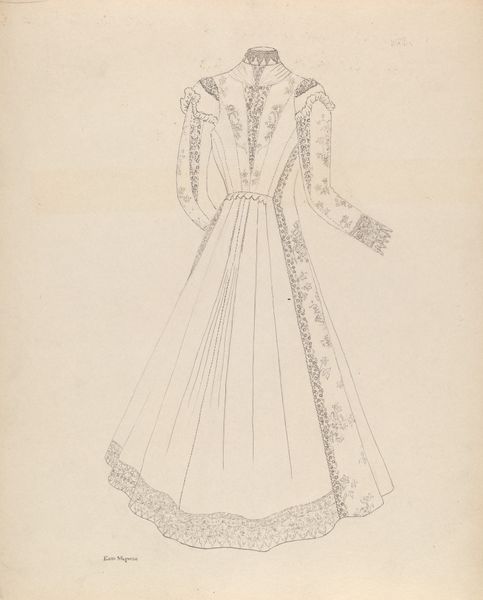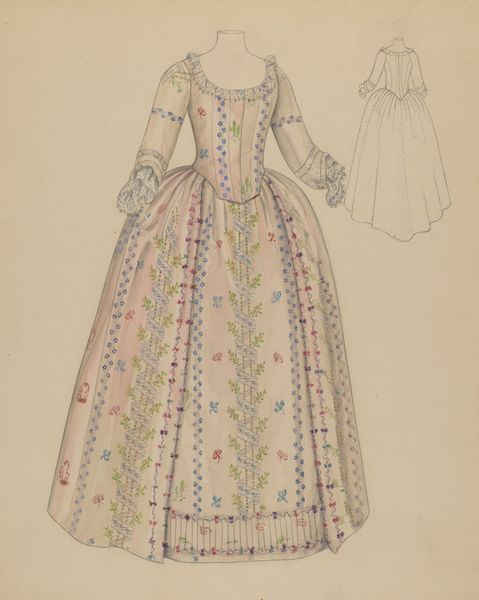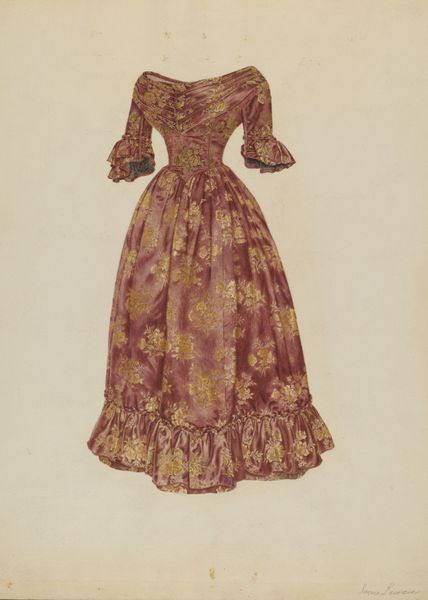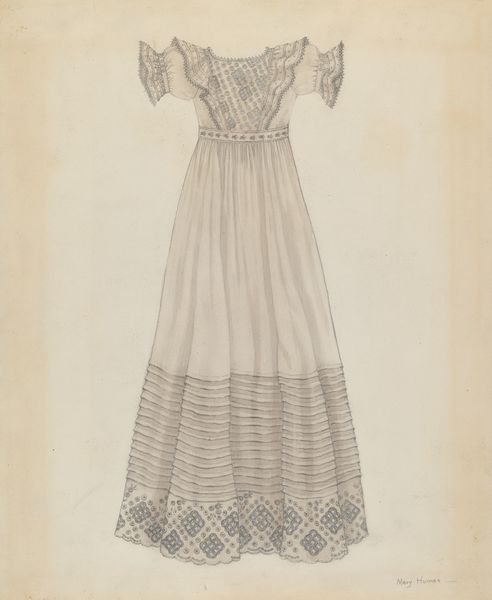
drawing, paper, pencil
#
drawing
#
paper
#
historical fashion
#
geometric
#
pencil
#
modernism
Dimensions: overall: 30.2 x 22.2 cm (11 7/8 x 8 3/4 in.)
Copyright: National Gallery of Art: CC0 1.0
Curator: Before us is "Child's Dress," a pencil drawing on paper created around 1936 by Melita Hofmann. The image features a design for a dress, complete with geometric and floral embellishments and a secondary, smaller rendering to its right. Editor: It's beautiful and a little bit haunting. Seeing this elaborate design, so detailed and clearly meant for a child...it makes you wonder about who she was and what her life was like in a world that demanded even its children be ornamented. Curator: Exactly. And thinking about the period—the mid-1930s, amidst the Depression, as fascism rose in Europe—the dress embodies complex tensions. It represents, perhaps, both the longing for a romanticized past and the constraints placed upon children, particularly girls, to conform to societal expectations around beauty and decorum. Editor: It feels like a paper doll's dream, simultaneously delicate and fragile but also carrying a weight of expectation. Look at that lacework! Someone clearly put so much into every aspect of the design, like the puffed sleeves. And there's another little drawing right next to the other as well, just casually floating on the paper's surface! Curator: Indeed. Consider the context of modernism too. While modernism pushed for simplification in many realms, this drawing presents a fascinating tension. The stark medium of pencil on paper emphasizes precision and control, contrasting with the florid designs it captures. The question becomes, then, what commentary does this present in that period? Editor: Maybe the artist was wrestling with that very conflict! The need for stark utility versus the sheer joyful ornamentation of life...it reminds me of that saying about how we need both the bread and the roses. Perhaps this drawing is its own quiet, gentle manifesto! Curator: Perhaps. And from an intersectional perspective, this dress also allows us to analyze the relationship between fashion, gender, and class during that historical period. The care put into crafting what the child could look like in society stands out in high relief. It certainly compels one to delve deeper. Editor: It definitely sparks the imagination! As a single piece, it represents just that moment where dreaminess and the harsh realities of history and childhood come crashing together, leaving us, quite wonderfully, with so much more to explore.
Comments
No comments
Be the first to comment and join the conversation on the ultimate creative platform.

